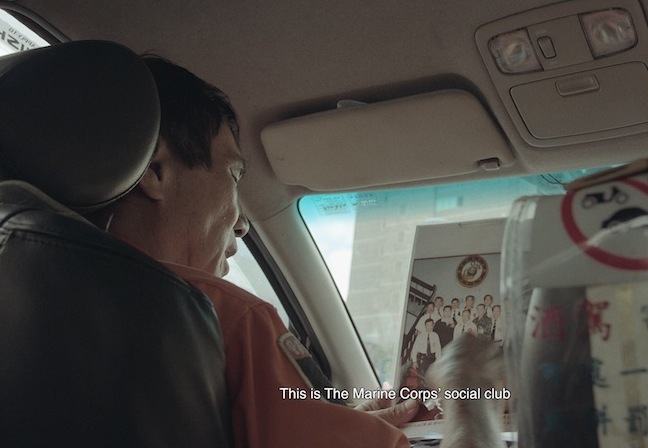TKG+, Taipei 6 May – 25 June
Chia-En Jao’s latest solo exhibition comprises three works, including Taxi (2016), a work commissioned by the Guggenheim Museum in New York, in which the Taiwanese artist asks Taipei taxi drivers to take him to various locations of historical significance – for instance, the Chiang Kai-Shek Memorial Hall – while he steers their conversations towards politics. Sometimes the artist is lucky and has a productive dialogue; at other times he is given the cold shoulder. The resulting video looks like a ‘hidden camera’ documentary, revealing the personal memories and ideas of different characters; together these conversations constitute a parallel narrative to the ‘standard’ interpretation of local history. There are also moments in the video when the drivers start to comment on the political and social situation of Taiwan today: one of them vividly recounts his experience with the newly rich tourists from mainland China, through which one can easily sense a mixed feeling regarding cross-Strait relations in Taiwanese society. Like Jao’s previous work REM Sleep (2011, not on show here), in which he invited immigrant workers from Southeast Asia to narrate their dreams in front of the camera, Taxi is a work based on individual voices and a methodology that has become something of a signature for the artist.
The screen showing Counterclockwise (2017) actually moves counterclockwise: attached to a motorised arm, the projection rotates 360 degrees each hour, transforming a temporal experience into one that, for the audience, is spatial as well. Unsurprisingly, the video itself talks about time, or more precisely, the loss of time. The artist deploys only silent footage to trace the historical backdrop around the 2015 reconstruction of the Kusukusu Jiniya Shinto shrine in Kus Kus Village, Taiwan. The whole story began in 1871, when a group of shipwrecked Ryukyuan sailors were murdered by Paiwan aborigines near the southwestern tip of Taiwan, in what is known as the Mudan incident, and which gave the Japanese an excuse to later send troops to Taiwan. In the video, we can see the Kusukusu Jiniya Shinto shrine on the mountain’s summit pointing towards Padriyiur Bay, where the Ryukyuan ship foundered, with flashes of light emitting Morse code far away from the bay, giving names and basic records of survivors of the Mudan incident. The images look calm and poetic, in contrast to the violent and sad stories concealed in the landscape. The reconstruction of the shrine also invokes controversial responses, reflecting different interpretations of this symbolic architecture in Taiwan.
More symbols and icons can be seen in the A Question of Balance series (2017), which comprises 11 watercolours, each depicting a shirtless man balancing a long carrying pole across his shoulders. Strung on either end of the pole are images related to local history and beyond. The long individual titles of these watercolours offer descriptions of the unusual loads, for example American cartoon in 1882 depicting John Bull as octopus; Skull in Egyptologist George Gliddon and Surgeon Josiah Nott’s Types of Mankind (1854): Fig. 344 Young Chimpanzee; detail of 1910 British- Japanese exhibition poster; woodcut print by Huang Rong-Can: Children in Hunger; Karl Marx monument in Chemnitz, Germany, designed by Lev Kerbel. It is not easy to figure out all the details about the artist’s arrangement of these visual elements, but here viewers are invited to produce their own narratives following the artist’s cues. Like the drivers in Taxi.
From the Autumn 2017 issue of ArtReview Asia
